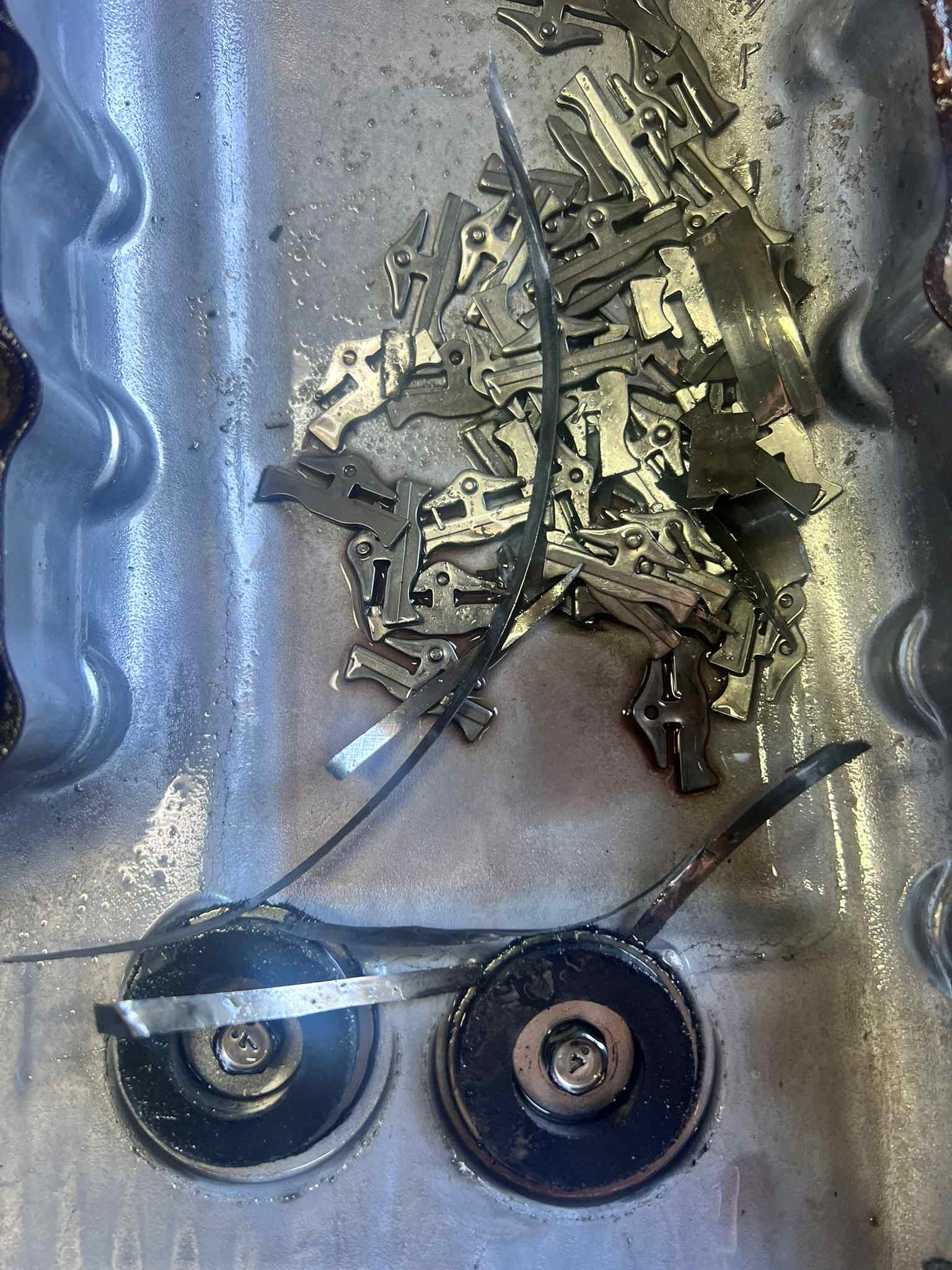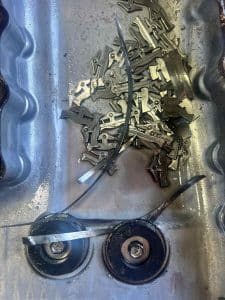CVT Shudder in Your X-Trail or Pathfinder?

CVT Shudder in Your X-Trail or Pathfinder?
CVT Shudder in Your X-Trail or Pathfinder? Here’s What Nissan Won’t Tell You
If you’re driving a Nissan X-Trail or Pathfinder and your transmission feels like it’s stuttering, shaking, or struggling to get moving, there’s a good chance you’re experiencing the infamous CVT shudder. It usually starts off subtle — a light jerk when accelerating from a stop, or a bit of vibration when cruising at 60. But give it time, and it turns into a serious drivability issue. What most owners don’t know is that this shudder isn’t always the death sentence it’s made out to be.
Dealerships and general mechanics are quick to point the finger at the transmission itself. Their solution? Replace the entire unit. In many cases, they’ll quote between $6,000 and $9,000 for a full CVT swap — with little effort made to investigate the actual cause of the fault. The truth is, you may not need a new transmission at all.
At Brisbane Tuning & Turbo, we’ve seen this exact scenario unfold dozens of times in late-model X-Trails and Pathfinders with Jatco CVTs. The underlying issues are real — but the right diagnosis often reveals a path forward that doesn’t involve replacing your whole transmission.
What Is CVT Shudder?
CVT shudder is the sensation of vibration, pulsing, or slipping that occurs during acceleration or while cruising at steady speed. In most cases, it feels like the car can’t decide what gear to be in — except that in a CVT, there are no traditional gears. It’s a continuous belt-driven system that constantly adjusts ratio based on engine load and speed.
When a CVT starts to shudder, it means there’s an internal loss of smoothness in the drive system — either from slipping, fluid degradation, overheating, or wear on key components. It might only happen under load. It might only happen when warm. But it’s almost always a sign of pressure loss or clutch engagement inconsistency inside the unit.
For X-Trail and Pathfinder owners, the most common symptoms include:
Shuddering when accelerating from a stop.
Delayed engagement into drive or reverse.
High RPM at cruising speed with no corresponding acceleration.
Vibration at low to mid throttle.
Warning lights or reduced performance mode after extended driving.
What’s Actually Causing It?
Most of these vehicles are equipped with the Jatco RE0F10A or RE0F09B CVT, depending on model and year. These transmissions use a chain/belt system with pressure-controlled pulleys and an internal torque converter to manage engine power. When things go wrong, it usually traces back to one of four root causes.
First, there’s fluid degradation. CVT fluid breaks down faster than traditional auto trans fluid, especially under load or in hot weather. Once the fluid loses viscosity, it can’t maintain the pressure needed to hold the pulleys in the right position. That results in belt slip — and that’s what causes the shudder.
Second, overheating. These transmissions are very sensitive to heat, especially when towing or driving up hills. The factory coolers in many X-Trails and Pathfinders are barely adequate in Queensland conditions. Once fluid overheats, it can’t recover. Thermal stress causes internal damage to seals, bearings, and solenoids.
Third, internal wear. High-kilometre CVTs often suffer from worn steel belts or damaged pulleys, particularly if the fluid’s been neglected. This results in inconsistent contact and pressure loss between the drive components.
And finally, torque converter issues. These CVTs still use a torque converter for initial take-off, and failures in the converter clutch or lock-up function can also cause shudder, especially in stop-start traffic.
Why Mechanics Often Get It Wrong?
The problem with CVT faults is that many general workshops don’t have the right tools or data to scan the transmission module properly. A standard OBD2 reader will often only show engine-related codes. Even if a fault like P17F0 (CVT judder) is present, it might be missed or misinterpreted.
That’s why the go-to advice is often: “replace the transmission.” It’s safe for the mechanic, but not helpful (or affordable) for the customer.
What’s worse is that some owners try to solve the issue themselves by flushing the fluid — which sometimes makes it worse. If you use the wrong fluid, don’t bleed the pressure system properly, or ignore the adaptive memory reset procedure, the transmission may become even more erratic.
At Brisbane Tuning & Turbo, we’ve had customers tow in vehicles that were “just serviced” at a dealership, only to discover the cooler wasn’t flushed, the fluid level was wrong, and the CVT was still throwing faults under load. Diagnosis matters — and the devil is in the detail.
What Nissan Won’t Tell You
“Filled for Life”
Nissan and Jatco have both come under pressure in the U.S., Canada, and Australia for widespread CVT failures. Extended warranties, class action lawsuits, and bulletin updates have been issued — but often only cover early build years or vehicles within tight mileage limits.
Here’s what you’re not told: CVT failures don’t always mean total transmission destruction. Many shudder cases are caused by fluid heat degradation, blocked cooling systems, or torque converter breakdown — all of which can be addressed before they destroy the entire unit.
In fact, Nissan even released TSBs (Technical Service Bulletins) in other markets recommending cooler upgrades, software reprogramming, and fluid changes for certain CVT fault codes. Yet here in Australia, the default answer remains “replace it.”
That’s not good enough.
Our Diagnostic Approach at Brisbane Tuning & Turbo
Brisbane Tuning & Turbo takes a different route. When a customer books in a CVT fault, we don’t just plug in a scanner and take a guess. We follow a step-by-step diagnostic path designed to isolate the cause of shudder without jumping to conclusions.
We start by scanning the transmission module using Autel, Abrites, or Jatco-compatible tools (Snap-On). This gives us full access to CVT-related fault codes, temperature logs, and adaptive data. Codes like P17F0, P0776, or P0841 often tell us whether the issue is mechanical or hydraulic.
Next, we perform a fluid condition check, visually inspecting the colour and smell of the oil, checking for glitter (metal shavings), and testing for heat degradation.
Then we take the vehicle on the road test and run it under steady throttle to simulate load — exactly where most shudders occur. We monitor RPM slip, throttle/load ratios, torque converter clutch behaviour, and belt tension behaviour through live data.
Based on this data, we determine whether:
The fluid is cooked but the transmission is intact.
The torque converter clutch is failing but the rest of the unit is healthy.
Pressure loss is occurring due to a faulty solenoid or cooler blockage.
Internal wear is severe and replacement is the only safe option.
Fixes That Actually Work
Once the diagnosis is clear, we offer a range of options depending on the fault.
If the CVT fluid is the issue, we carry out a full cooler flush and CVT fluid exchange, using the correct NS-3 or equivalent spec fluid. We also perform an adaptive reset and re-learn procedure using the scan tool, which helps the TCM recalibrate clutch pressure and pulley behaviour.
If heat is a contributing factor, we install an external transmission cooler — a major upgrade over the factory heat exchanger. This reduces fluid temperatures significantly, especially in Brisbane’s climate or when towing.
If the converter clutch is worn, we can replace t

CVT Shudder Nissan CVT Transmission Belt failure
he torque converter without replacing the entire CVT in certain cases. This is more cost-effective and avoids disturbing the belt and pulley system if the rest of the unit is still solid.
In cases where the CVT has suffered irreversible wear, we’ll provide a replacement option — but only after showing you the evidence from the dyno and scan data.
Prevention is Still the Best Value
For owners not yet experiencing full-blown failure, prevention is key. That means regular CVT fluid servicing — usually every 40,000 to 60,000 km — and installing a cooler if you tow or drive in high temps.
It also means addressing delayed engagement, whining, or RPM flare early before they turn into shudder. These are all signs of pressure loss and should be diagnosed quickly.
What If Your Pathfinder CVT No Longer Moves the Car?
In some cases, the CVT issue progresses beyond shudder or delayed engagement and reaches the point where the car doesn’t move at all. You might put the vehicle in Drive or Reverse, the engine revs normally, but nothing happens — no pull, no gear change, no motion. When that happens, you’re dealing with a critical transmission failure. Here’s what could be causing it:
Internal Belt or Chain Failure
Inside the Jatco CVT, a steel chain or belt runs between the primary and secondary pulleys. This belt is what transmits power from the engine to the driveshaft. If the belt stretches, slips, or breaks entirely, the pulleys will spin — but the wheels won’t. The engine might rev freely as if it’s in neutral. In some cases, the failure happens gradually, especially after extended shuddering or overheating. In others, it can snap suddenly, especially under load or towing conditions.
Torque Converter Lock-Up or Stator Failure
While CVTs don’t use traditional gear sets, they do use torque converters to provide torque multiplication during take-off. If the lock-up clutch inside the converter fails or if the stator inside stops functioning, it can prevent the vehicle from generating enough force to move. This typically presents as the engine revving with little to no response in gear, especially after the vehicle is warm. Some cars may still creep slightly when cold but lose all drive once hot — a classic torque converter breakdown pattern.
Valve Body or Oil Pump Failure
A CVT transmission relies on continuous hydraulic pressure to function. That pressure is created by the internal oil pump and managed by the valve body, which directs flow to the pulleys and clutches. If the pump fails, line pressure drops to zero — and the transmission can’t engage anything. Valve body faults, like a stuck solenoid or cracked casting, can also disrupt fluid routing enough that the pulleys won’t clamp or move. In these cases, the vehicle may show no drive, no codes, and no apparent leaks — but will be completely dead under load.
Fluid Starvation or Catastrophic Leak
These CVTs are extremely sensitive to fluid level and condition. If the transmission has overheated or developed a large leak (cooler line, seal failure, or internal crack), the fluid level may drop too low for the pump to pick up oil. When that happens, the system becomes air-bound, and nothing engages. The car will appear to be in neutral in all positions. This can often be confirmed by checking the dipstick (if equipped) or by scanning live data for hydraulic pressure readings — which will read 0 bar or kPa when fluid is lost.
Electronic Lockout or TCM Failure
In some cases, the transmission control module detects an internal failure so severe that it refuses to engage any drive function. This can be caused by voltage spikes, sensor mismatches, or mechanical faults that trip safety logic. Fault codes like P0776 (pressure control solenoid stuck), P0868 (line pressure low), or P1778 (stepper motor stuck) are often linked with limp mode or no-drive conditions. In these scenarios, even if the hardware is functional, the system will remain locked until the fault is cleared and the module reset.
When You’re Ready to Fix It Properly
If your Nissan X-Trail or Pathfinder is shuddering, jerking, or just not driving right — don’t let someone tell you the transmission is toast without a proper diagnosis. You could be paying for a full replacement when the real problem is fluid, heat, or a converter.
Fix the fault before it escalates, and you’ll save thousands — and restore smooth, confident driving in your Nissan.